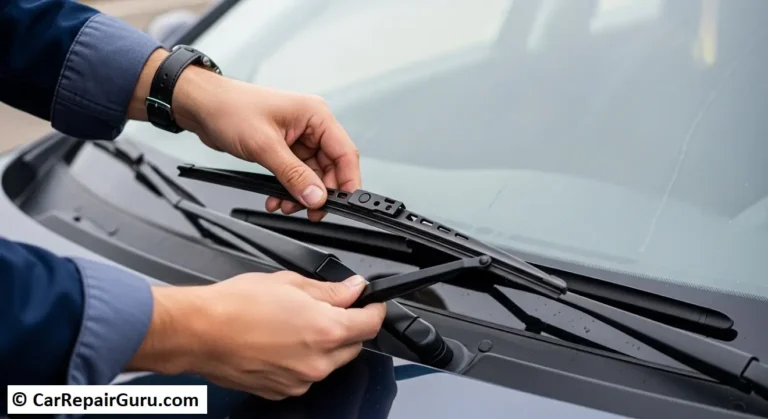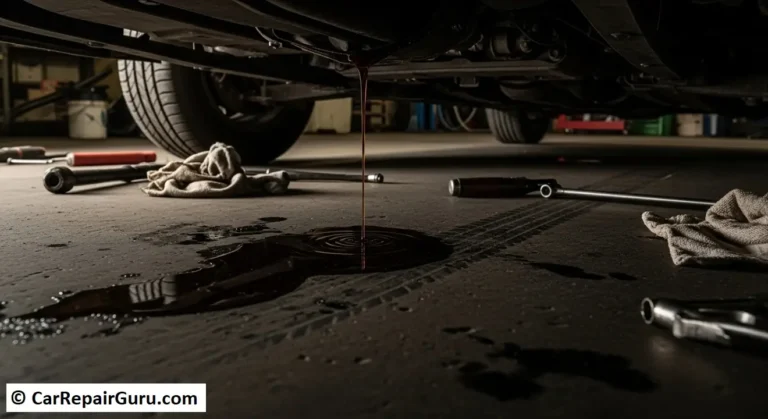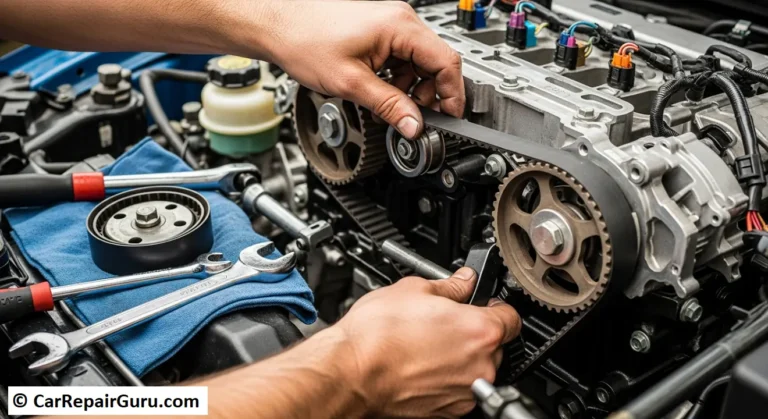
Did you know most road trip accidents are caused by avoidable safety oversights? From forgetting to check tire pressure to skipping rest breaks, many drivers unknowingly put themselves and others at risk. That’s where car travel safety steps in—not as a complicated checklist, but as a smart, proactive approach to making every trip safer.
Whether you’re a daily commuter, a parent heading out on a family vacation, or someone gearing up for a scenic road trip, staying safe on the road should always come first. Car travel safety isn’t just about obeying traffic rules—it’s about preparation, awareness, and knowing how to prevent problems before they happen.
In this guide, we’ll cover everything from safe driving tips and essential emergency items to road trip safety strategies for all kinds of weather. Buckle up—it’s time to travel smarter, not harder.
Pre-Trip Car Safety Checklist
Before you hit the road, a quick checkup can make all the difference between a smooth ride and a roadside breakdown. Think of it as your personal car inspection checklist—a simple yet powerful way to ensure your vehicle is road-ready and safe.
Start with the tires. Check the tread depth using a coin or tread gauge, and don’t overlook tire pressure. Underinflated tires can reduce fuel efficiency and increase the risk of blowouts, especially on long trips. Next, test your brakes. If you hear squeaking or feel a delay in stopping, it’s time to get them looked at.
Lights are just as important. Headlights, brake lights, and turn signals should all be working properly—not only to help you see but to ensure others can see you.
Don’t forget the fluids. Check your oil level, coolant, and windshield washer fluid. Each plays a vital role in keeping your engine cool and your windshield clear.
Lastly, inspect your seatbelts and airbags. These lifesaving features are often overlooked but essential for every passenger’s safety.
Remember, car maintenance for safety isn’t just for mechanics. A few minutes of prep can protect you, your passengers, and everyone else on the road.
Essential Items to Pack for Car Travel
Even the best-maintained car can run into unexpected trouble, which is why packing the right gear is just as important as your route. Having a well-prepared car travel checklist ensures you’re ready for anything—from a flat tire to a long traffic jam.
Start with an emergency car kit. At a minimum, it should include a first-aid kit, flashlight, jumper cables, reflective triangles, and a basic tool set. These essentials can help you handle minor breakdowns or stay safe while waiting for roadside assistance.
Don’t forget extra water and snacks, especially on longer trips or if you’re traveling with kids. Staying hydrated and energized keeps everyone alert and comfortable.
Your phone charger and a fully loaded power bank are must-haves—not just for staying in touch, but for using navigation, music, or emergency services. And speaking of navigation, a paper road map or printed GPS backup can be a lifesaver if you lose signal in remote areas.
Packing smart isn’t just about convenience—it’s a big part of road trip safety. When you’re prepared, you can enjoy the ride with more confidence and peace of mind.
Safe Driving Tips for Long Trips

Long road trips can be exciting, but they also demand your full attention and energy behind the wheel. Whether you’re traveling solo or with passengers, following a few safe driving tips can help you reach your destination safely—and enjoy the journey along the way.
First, rest well before driving. Drowsy driving is just as dangerous as drunk driving. Aim for at least 7–8 hours of sleep the night before a long trip. If you’re feeling tired on the road, don’t push through—use rest stops to stretch, nap, or grab a coffee.
Stick to speed limits, even if the road looks clear. Speeding not only increases your chance of an accident, but it also reduces your reaction time in unexpected situations. Practicing defensive driving—staying alert, scanning your surroundings, and anticipating other drivers’ actions—can help you avoid many common hazards.
Finally, eliminate distracted driving. Keep your phone out of reach or use hands-free options, avoid eating while driving, and lower the volume on loud music or distracting conversations. Every second of attention counts when you’re on the move.
Long trips don’t have to be risky. With the right habits, you can stay safe, alert, and in control from start to finish.
Child Safety in Cars
When it comes to child safety in cars, there’s no room for shortcuts. A properly secured child is far less likely to be injured in a collision, and taking a few extra minutes to check safety measures can make a life-saving difference.
Start with the right car seat. Infants should be in rear-facing seats, toddlers in forward-facing seats with a harness, and older children in booster seats until they’re tall enough to safely use a seatbelt. Always follow the manufacturer’s instructions and local car seat safety guidelines based on your child’s age, weight, and height.
Next, ensure that seatbelts are used correctly every time—no exceptions. According to many seatbelt laws, all passengers, regardless of age, must be properly restrained. The belt should lie flat across the shoulder and chest, never the neck or under the arm.
Never leave children unattended in a vehicle, even for a moment. Temperatures can rise dangerously fast, and young children can’t regulate heat well.
Also, use child locks on doors and windows to prevent curious little hands from opening them mid-trip.
A few extra precautions go a long way. Protecting your most precious passengers starts with awareness and consistent, careful actions every time you drive.
Safety Tips for Night Driving
Driving at night brings a different set of challenges—even for experienced drivers. Reduced visibility, glare from headlights, and increased fatigue make nighttime travel riskier. That’s why following a few smart night driving safety tips can help keep you alert and in control after dark.
Start by making sure your headlights and windshield are clean. Foggy lenses or a dirty windshield can severely limit your visibility. Regularly check that all your lights—headlights, taillights, brake lights—are functioning properly and aimed correctly.
When driving at night, it’s important to reduce speed and increase your following distance. It’s harder to judge distance and react quickly when visibility is low. Slowing down gives you more time to respond to unexpected hazards like sharp turns, sudden stops, or animals crossing the road.
Be extra cautious in rural or wooded areas where wildlife is more active at night. Use high beams when there’s no oncoming traffic, but remember to dim them for approaching vehicles.
And most importantly, watch out for fatigue. If you feel drowsy, don’t fight it—pull over in a safe place and rest. One of the most underrated long drive safety tips is simply knowing when not to drive.
Safe nighttime travel starts with preparation and smart decision-making.
Weather-Specific Travel Safety

No matter how experienced you are behind the wheel, the weather can quickly turn a smooth trip into a risky one. Understanding how to adjust your driving based on conditions is essential for road safety in bad weather—and it starts with preparation and awareness.
In rainy conditions, slow down and turn on your headlights, even during the day. Wet roads reduce traction and increase the risk of hydroplaning. Avoid sudden braking or sharp turns, and give yourself extra space between vehicles.
When driving on snowy or icy roads, reduce speed significantly and avoid abrupt movements. Install snow tires or chains if conditions call for it, and always maintain a much larger following distance than usual. Gentle acceleration and braking are key to staying in control.
Hot weather brings its own risks, especially to your tires. High temperatures can lead to tire blowouts, especially if your tire pressure isn’t properly checked. Keep an eye on your coolant levels and pack extra water to stay hydrated—heat affects both engines and drivers.
By following these weather-related driving tips, you can adapt to the elements and stay safe, no matter what nature throws your way.
In Case of Emergency
Even the best-prepared drivers can face unexpected situations on the road. Whether it’s a flat tire or a fender bender, knowing what to do in an emergency can make a big difference in your safety and peace of mind. These emergency driving tips will help you stay calm and take the right steps when it matters most.
If your car breaks down, pull over safely to the side of the road—preferably on the right shoulder. Turn on your hazard lights immediately to alert other drivers. If it’s safe, set up reflective triangles or flares behind your vehicle to increase visibility. Stay inside the car with your seatbelt on, especially if you’re near traffic.
In the event of a car accident, first check for injuries. If anyone is hurt, call emergency services right away. If it’s a minor accident, move the vehicles out of traffic (if possible), exchange information with the other driver, and take photos of the scene. Always file a police report for insurance purposes.
Finally, know who to call for roadside assistance—keep your insurance or roadside service contact info easily accessible.
Being prepared and knowing how to respond enhances your car accident safety and keeps you in control when things go wrong.
Conclusion
Car travel safety isn’t just a checklist—it’s a mindset that keeps you, your passengers, and everyone on the road safer. From regular vehicle maintenance and smart packing to staying alert and adapting to weather conditions, every step you take adds up to a safer driving experience.
Being proactive means more than just avoiding breakdowns or accidents—it means driving with confidence and peace of mind. Whether you’re planning a weekend getaway, a family road trip, or a daily commute, the habits you form today will shape your safety tomorrow.
So before your next trip, follow this guide to make your journey safe and stress-free. A few extra minutes of preparation could be the key to avoiding delays, staying calm in emergencies, and protecting those you care about most.
Drive smart. Stay alert. And make every mile count.
FAQ
What is the most important car safety feature?
The seatbelt is the most important car safety feature. It helps protect you by keeping you securely in place during a collision or sudden stop.
How do I make my car travel-ready?
To make your car travel-ready, check the tire pressure, test the brakes and lights, and top up essential fluids like oil and coolant. Performing regular maintenance ensures your car is safe for any trip.
What should I do if I get tired while driving?
If you feel tired while driving, stop at a rest area to take a break or a short nap. Driving while tired can be dangerous, so it’s important to rest before continuing your journey.
What safety items should I always keep in my car?
Always keep an emergency kit in your car, including a first-aid kit, flashlight, jumper cables, extra water, snacks, and a phone charger. Having these items can help in unexpected situations on the road.






